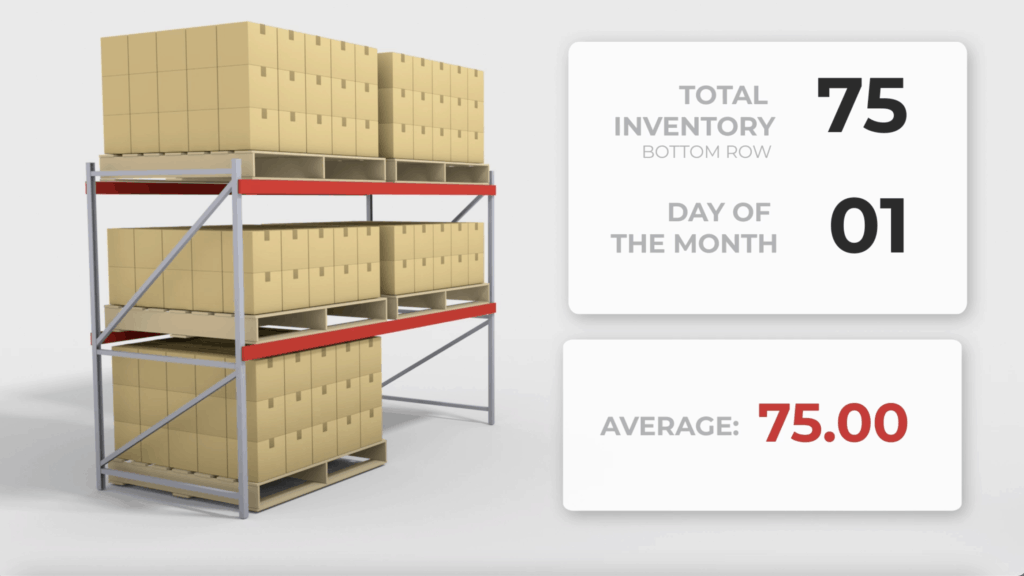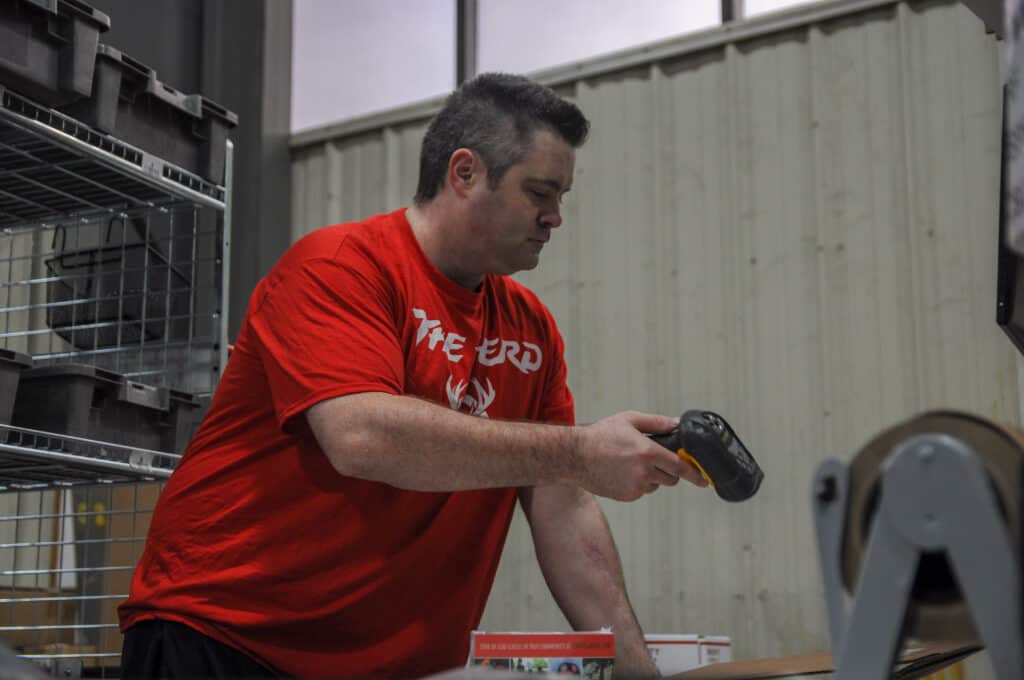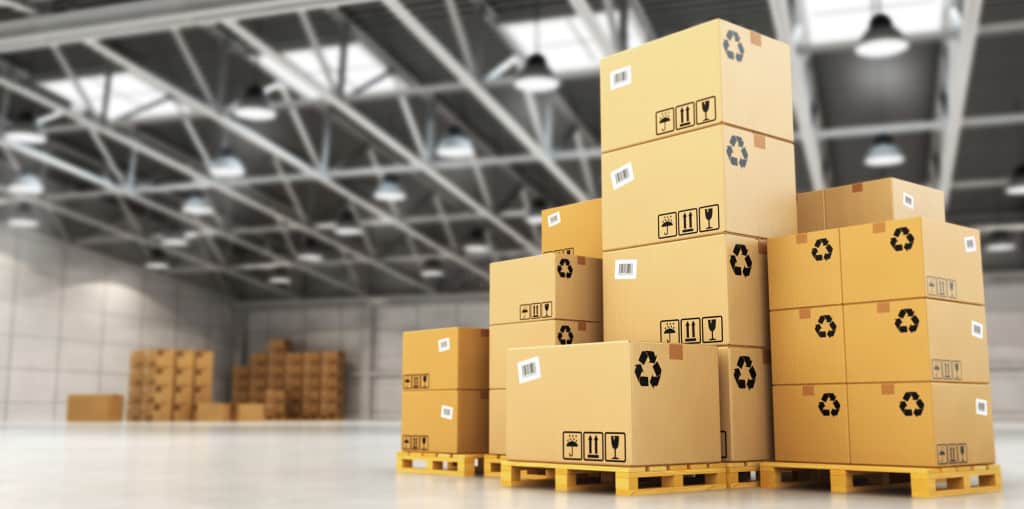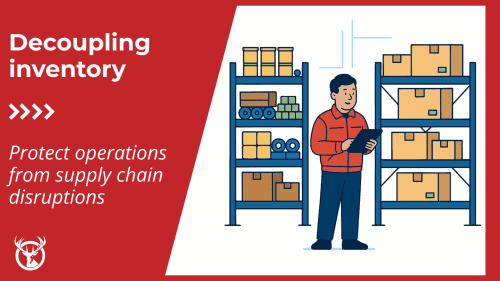High-tech warehousing has a new way to calculate space and pricing: the cubic storage model. This warehousing model uses a daily calculation of the cubic feet taken up by every item in the warehouse. ECommerce fulfillment companies can use this more precise measurement to calculate storage costs and allocate warehouse space.

The cubic storage model has been adopted by big names in the 3PL services industry, including Amazon and Deliverr. At Red Stag Fulfillment, we pride ourselves on offering industry-leading order fulfillment services. That’s why we are adopting the cubic storage model at our 3PL warehouses.
What is the cubic storage model?
The cubic storage model uses the dimensions of each item in stock to determine the amount of storage space a client uses. The number of cubic feet is tabulated daily, based on inventory in and out of the warehouse. At the end of the month, we average the daily totals and send a bill based on the average.



How to calculate cubic foot storage
Let’s take an easy example to show how the cubic storage model works. Client A has a product in a 12” x 12” x 12” box, so each item takes up one cubic foot. At the beginning of the month, Client A has 75 of this product in inventory. On day 11, the warehouse ships an order for 25 items. The client has 50 of the product in the warehouse for the next 10 days, and then another order of 25 ships. For the final 10 days of the month, 25 cubic feet of stock are on the shelf. The average amount of stock is 50 cubic feet, so the end-of-month charge will be for 50 cubic feet of storage for the month.
The equation looks like this:
(75 cu ft x 10 days) + (50 cu ft x 10 days) + (25 cu ft x 10 days) = 1500 cu ft/30 days = 50 cubic feet per day, on average

How does Red Stag Fulfillment calculate daily cubic foot totals?
But how do we know the cubic feet of storage used by each client? Here’s how we tally those numbers daily.
When a client sends a new product to a Red Stag Fulfillment warehouse, one of the first things we do is measure and weigh the item. These product specs live in our warehouse management system (WMS). We use the weight to calculate shipping costs in advance to avoid surprise shipping charges. Now, we use the product dimensions to calculate cubic feet of storage space.
Our WMS logs inbound inventory and records when each item is taken off the shelf to fill an order. This automated system gives us an accurate picture of the cubic feet of product in our warehouses every day.
Stop paying for air – start paying for products
The cubic storage model updates the way eCommerce companies pay for warehousing. Under the old model, storage fees were based on the number of pallets in the warehouse at the end of the month. This system has several downsides.
“Pallet” is an inexact term – cubic foot is not.
Charging for storage by the pallet lends itself to inaccuracy because pallets come in different sizes. There are double pallets, half pallets, and double half pallets. Plus, a pallet is not a fixed unit, and sizes can change over time. If you’ve gotten a quote for storing a pallet, the warehouse is making an assumption about the size of the pallet you’ll send. If your pallet is oversized, the warehouse might divide the stock into two pallets to fit its storage slots. A cubic foot is a cubic foot, and that measurement doesn’t vary.
You pay to store the air above your pallet.
Let’s take an example: you ship a pallet of merchandise early in the month. In this case, most of your products sell by the middle of the month, but a few items are left at the end. You’ve paid for the empty airspace above the pallet for most of the month. Under the cubic storage model, you would have paid only for the products you have in stock.
Overstacked pallets can damage inventory.
As pallets get bigger and the number of boxes on them gets larger, the chance of damage increases. The weight of the items piled on top can crush the bottom products. The cubic storage model removes the incentive for shipping gimmicks that can destroy merchandise.
Cubic foot pricing is a fair and accurate way to calculate warehousing costs. But it does more than stop billing you for empty air. The cubic storage model is also a terrific way to improve your fulfillment operations.

Benefits of cubic storage pricing
The benefits of the cubic storage model are both financial and operational. Here are some of the reasons that 3PLs and eCommerce companies are excited about cubic foot pricing.
Simple and transparent pricing
The cubic foot model is simple to understand: You pay for exactly what you store each day. And it’s more transparent because you can see precisely how your warehousing costs are calculated.
Predictable warehousing costs
Cubic foot pricing brings predictability to your storage costs because they are tied to the amount of inventory on hand. You couldn’t know exactly how many pallets you had in the warehouse at a given time, but you know the amount of stock you have in the warehouse.
Understand storage costs per product
Because of the transparency and accuracy of the cubic storage model, you can assign a storage cost to each product you sell. That number, combined with sales velocity for the item, can give you a more precise storage cost. Understanding storage costs per product allows you to set prices that fully account for the cost of goods sold.
More flexibility to optimize inbound inventory shipments
Once you understand the storage cost breakdown by product, you can adjust your inbound shipments to minimize warehousing costs. The cubic storage model incentivizes agile and lean inventory management, which will help you keep costs down.
Improved inventory management
Even marginal improvements in your inventory planning can give a significant boost to your profitability. The data from the cubic storage model allows you greater inventory visibility so that you can optimize your inventory strategy.

Accurate storage pricing
ECommerce fulfillment is an industry where accuracy is essential. The cubic storage model produces accurate storage data and pricing. Cubic foot pricing, made possible by today’s warehouse technology, provides accurate storage bills, eliminating a potential source of confusion and management headaches.
More efficient product storage
The per-pallet warehousing model doesn’t give fulfillment centers the flexibility to optimize pick and pack operations. With inventory no longer tied to pallets, warehouses are free to place items on shelves or pallets in optimal warehouse locations. This improvement in eCommerce fulfillment efficiency can lead to shorter turnaround times and faster delivery.
Red Stag Fulfillment harnesses the latest technology to provide accurate warehousing
The cubic storage model relies on end-of-day inventory snapshots to provide accurate tallies of the space taken up by different products. The tech that powers our warehouses allows us to track every product at a speed and level of accuracy that hand counts can’t match.

Red Stag Fulfillment has built our reputation on accurate fulfillment. We continuously monitor our warehouses and take responsibility for every item our clients entrust to our care. That allows us to offer a zero shrinkage policy and reimburse you if anything is damaged or lost in one of our warehouses. We can give you that guarantee because we treat your products as carefully as we would if they were our own. We believe that’s what professional warehousing is all about.
At Red Stag Fulfillment, we continuously update the technology that powers our warehouses to provide fast, accurate fulfillment with real-time reporting. The cubic storage model is our latest initiative to serve our clients better. It won’t be our last.
More about modern warehousing practices:
- Affordable Fulfillment: Understanding Total Fulfillment Value
- What’s Behind the Red Stag Fulfillment Guarantees?
- Do You Really Need to Own Your Warehouse?












